Street Calls of the Week
Introduction & Market Context
Odfjell SE (OB:ODF) presented its second quarter 2025 results on August 20, showing improved financial performance despite ongoing market uncertainty. The chemical tanker operator’s stock has been on an upward trajectory, rising 2.36% to 118.4 NOK in the most recent trading session, significantly above its 52-week low of 70.1 NOK.
The results mark a notable recovery from the company’s disappointing first quarter, when Odfjell’s earnings fell short of market expectations and triggered a 7.16% stock price decline. The Q2 presentation reveals how the company has navigated challenges from global trade tensions and tariffs while continuing to advance its sustainability initiatives.
Quarterly Performance Highlights
Odfjell reported a net result of $40.1 million for Q2 2025, up from $34.4 million in the previous quarter, with earnings per share rising to $0.51 from $0.44. The company achieved time charter earnings of $174.2 million, representing a 3.9% increase from Q1’s $167.7 million.
As shown in the following comprehensive overview of financial performance:

EBITDA improved to $98.4 million from $93.1 million in Q1, while return on equity reached 18.4%, up from 14.3%. The company’s return on capital employed also increased to 12.5% from 11.1% in the previous quarter.
CEO Harald Fotland highlighted the company’s resilience, noting in the presentation: "Odfjell delivered another resilient financial result in 2Q25 despite a market characterized by uncertainty due to geopolitics and trade tariffs."
Financial Analysis
The income statement reveals improvements across multiple metrics, with operating expenses decreasing slightly to $52.9 million from $53.2 million in Q1. The company’s EBIT rose to $58.6 million from $54.4 million in the previous quarter.
The following detailed breakdown illustrates these financial improvements:
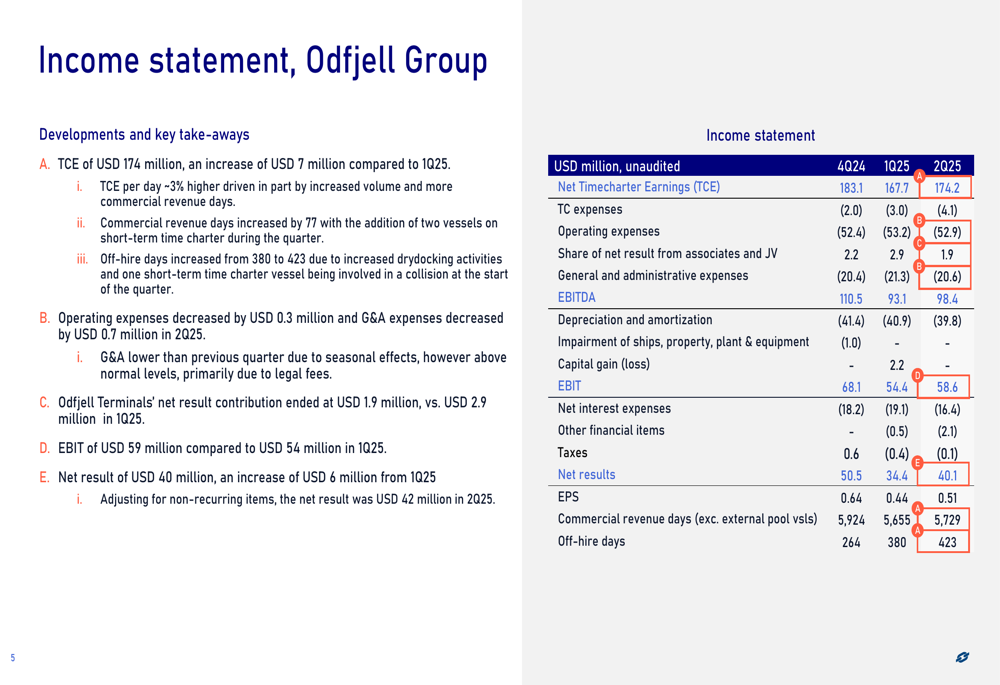
Odfjell’s daily earnings performance showed positive momentum, with time charter equivalent (TCE) per day increasing to $30,306 in Q2 from $29,556 in Q1. Importantly, this remains well above the cash break-even level of $23,791, which decreased slightly from $23,996 in the previous quarter.
One of the most significant improvements came in operating cash flow, which nearly doubled to $109.2 million from $60.4 million in Q1. This increase was primarily driven by a $32 million reduction in working capital and improved TCE earnings.
The following chart illustrates this substantial cash flow improvement:
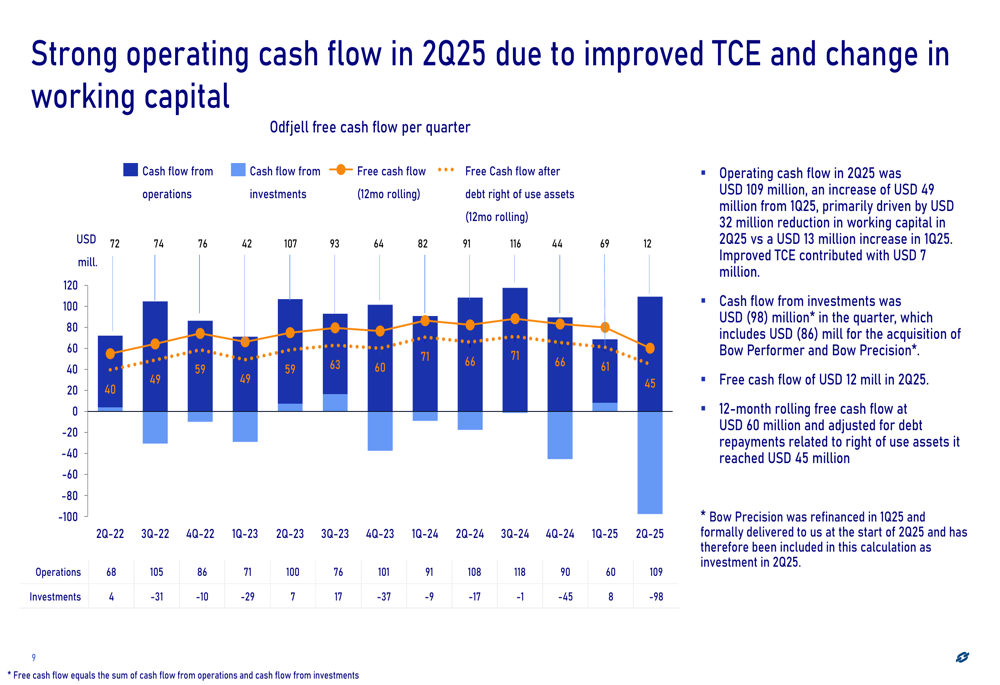
Operational Achievements
Beyond financial metrics, Odfjell reported several operational achievements during the quarter. The company acquired two vessels, Bow Performer and Bow Precision, representing an investment of $86 million. Additionally, Odfjell issued a new five-year NOK 1 billion bond in June, which was swapped to $97 million.
Total (EPA:TTEF) volumes transported increased during Q2 to 3.4 million metric tonnes, while the company maintained strong contract of affreightment (COA) coverage. The following chart shows these volume trends:
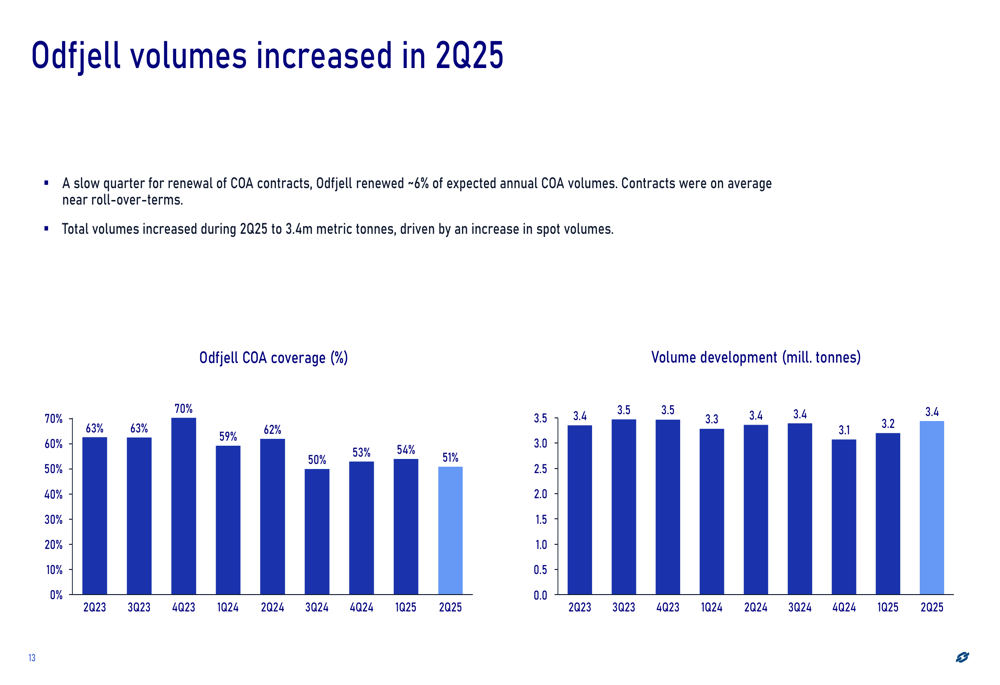
Perhaps most notably, Odfjell achieved a record low carbon intensity in Q2 2025, continuing its long-term trend of emissions reduction. The company’s carbon intensity indicator (CII) reached 6.8, down significantly from historical levels and representing substantial progress toward sustainability goals.
The following graph demonstrates this environmental achievement:
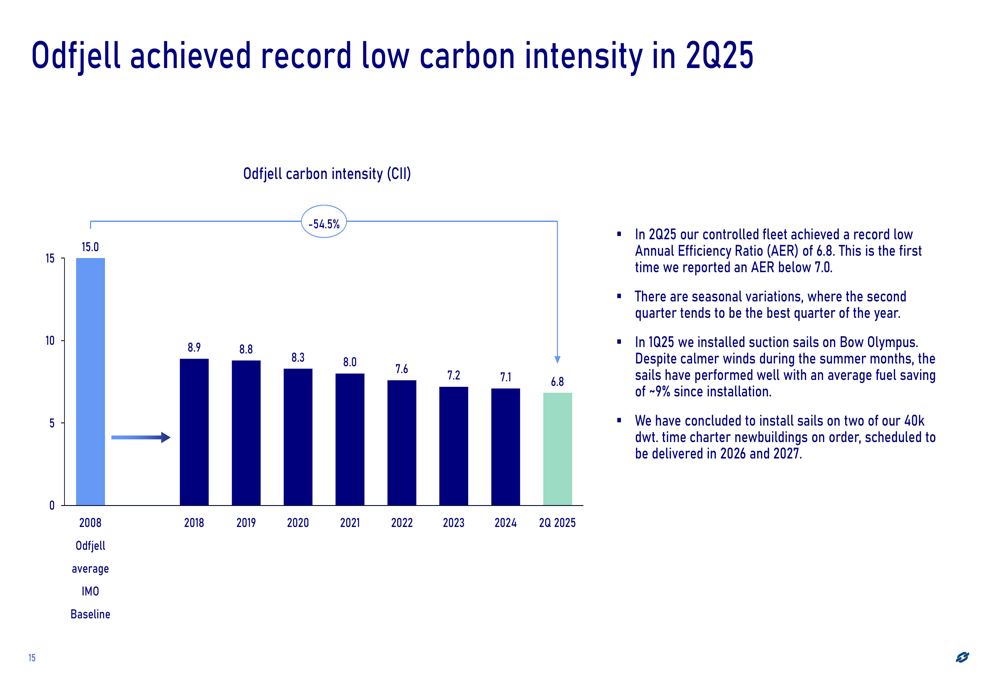
This environmental progress aligns with statements from the Q1 earnings call, where CEO Harald emphasized the company’s commitment to sustainability, stating: "We have proved that it’s possible to sail carbon neutral already today."
Market Outlook & Strategy
The presentation addressed several market challenges, including the impact of economic uncertainty and new tariffs on chemical trade. The slide below details the updated tariff rates by country/region, with China facing a 30% tariff:
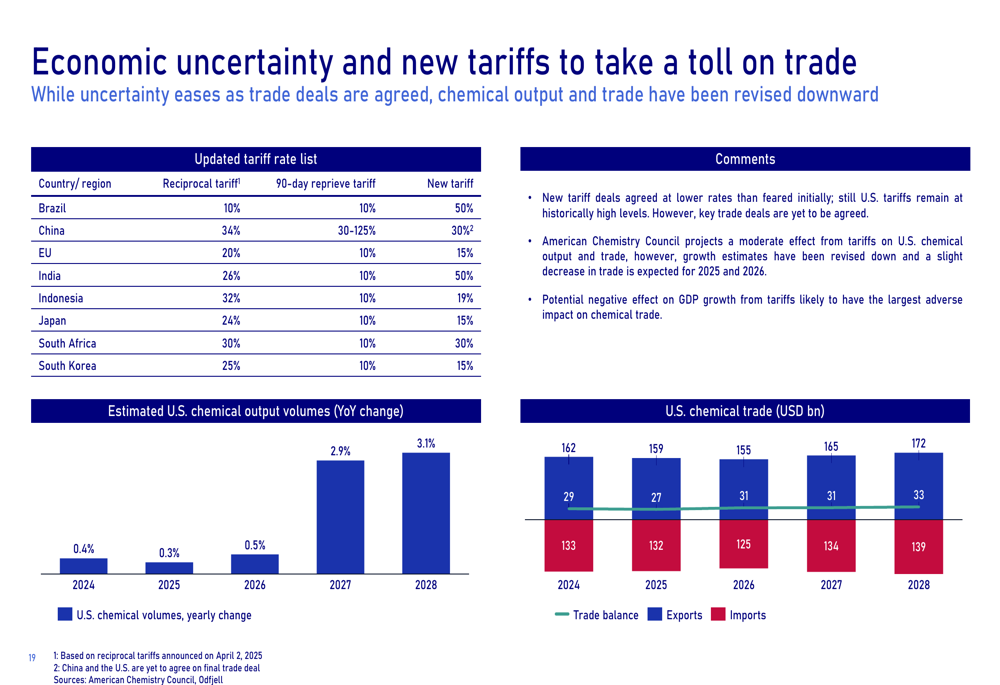
Spot rates declined on average during Q2, though with significant variance across regions. The company noted that swing tonnage increased but from marginal levels, while Medium Range (MR) tanker earnings saw a boost toward the end of the quarter.
Looking ahead, Odfjell maintained a cautiously optimistic outlook while acknowledging continued market uncertainty. The company highlighted several factors affecting both supply and demand in the chemical shipping market:
1. Chemical trade volumes showing resilience despite economic headwinds
2. Tariffs continuing to affect market sentiment
3. Chemical tanker fleet growth remaining manageable
4. Swing tonnage impact on chemical trade
The orderbook for chemical tankers remained stable in Q2, suggesting balanced supply growth in the coming years. This stability, combined with Odfjell’s strong contract coverage and operational efficiency, positions the company to navigate ongoing market challenges.
In summary, Odfjell’s Q2 2025 results demonstrate the company’s ability to improve performance despite challenging market conditions. With stronger financial metrics, continued fleet investment, and record environmental achievements, Odfjell appears well-positioned to maintain its competitive standing in the chemical tanker market while advancing its sustainability agenda.
Full presentation:
This article was generated with the support of AI and reviewed by an editor. For more information see our T&C.
